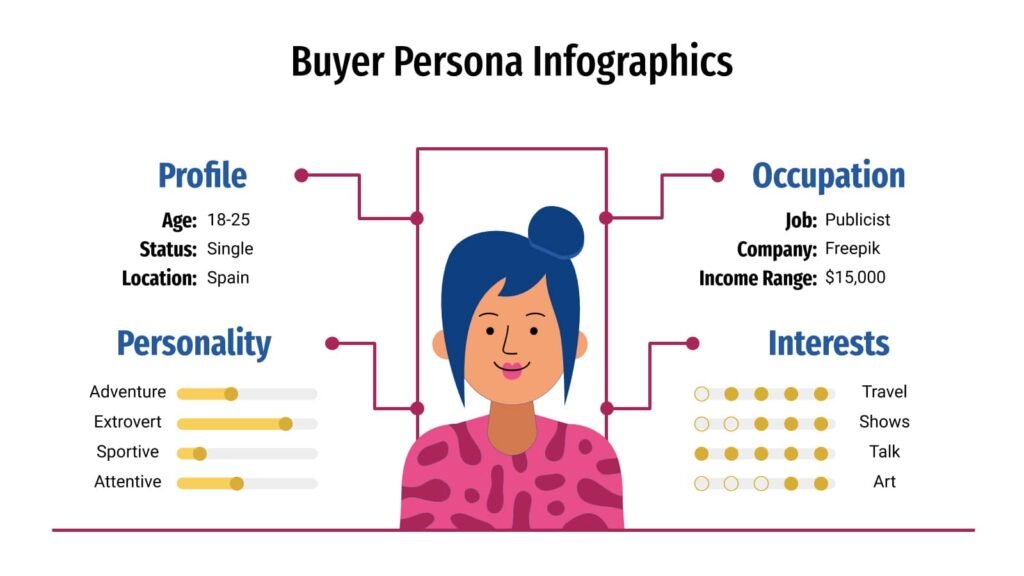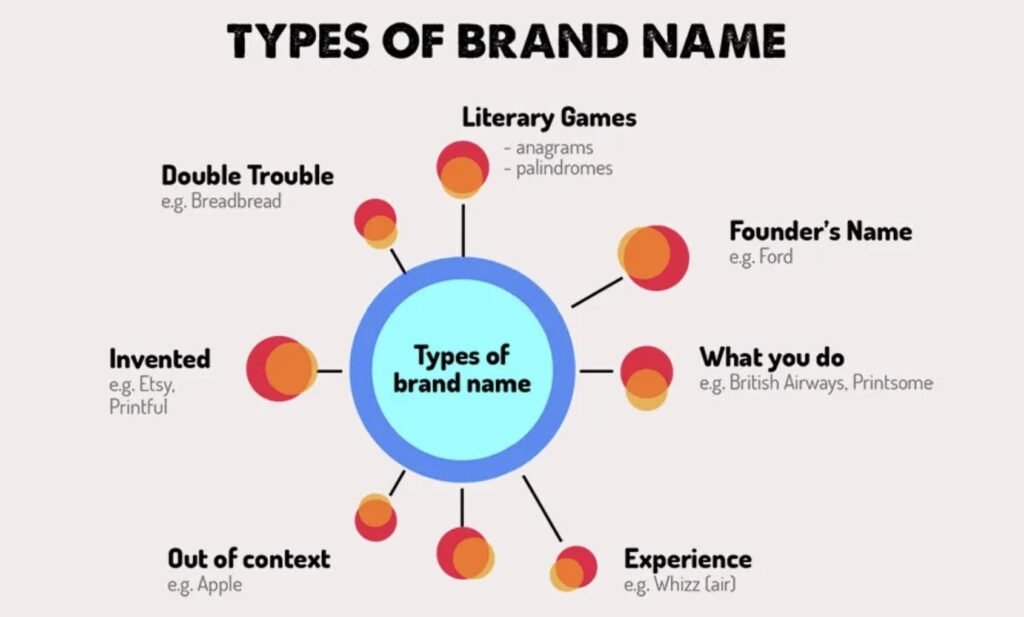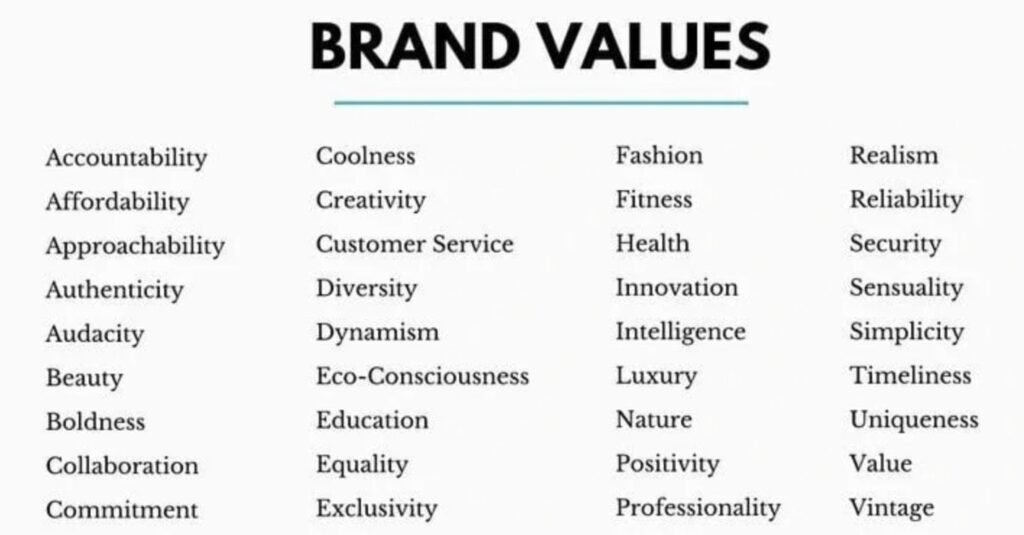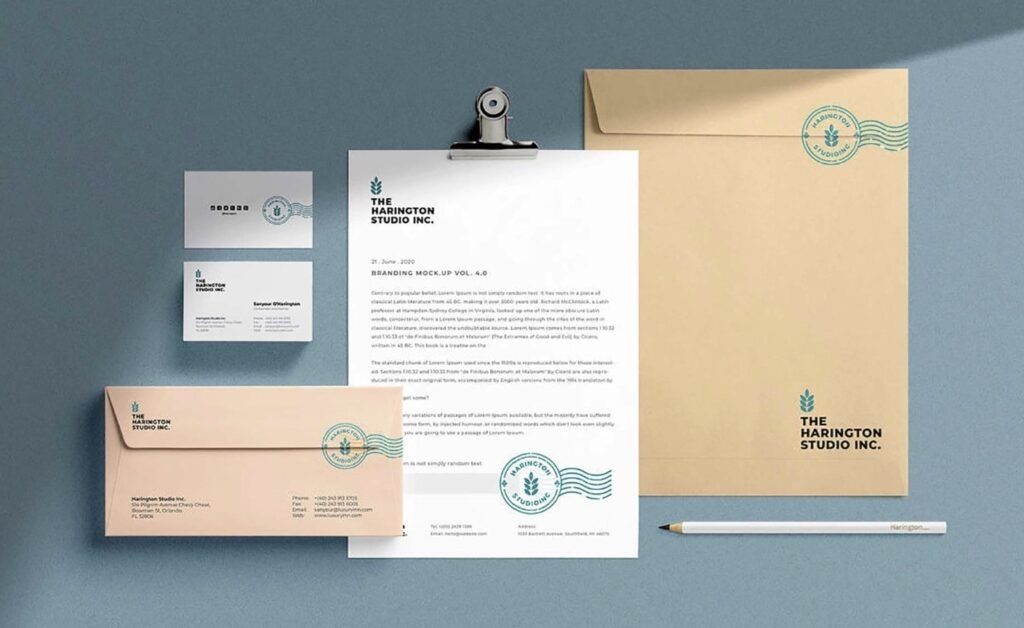A solid brand can make all the difference in standing out and connecting with your audience. But where do you start? That’s where a branding checklist comes in handy.
It’s a step-by-step guide to ensure you cover all the essentials, from defining your brand’s mission and values to creating a cohesive visual identity and voice.
Ready to dive in and make your brand unforgettable? Let’s get started with this ultimate branding checklist!
Disclaimer: If you buy any products through links on this site, I may earn a commission. But it doesn't make any difference to your cost, and it helps me keep this blog running. So you could always read my articles for free.
Brand strategy checklist
Your branding sets the foundation for how customers view your business. It joins the key components of your brand with your business, including your target audience and the best way to reach them. So getting your strategy right is a big part of your branding checklist.
Know your audience
One of the most crucial parts of building a strong brand strategy is knowing your audience. Trust me, understanding who you’re talking to can make all the difference in how effectively your message resonates.
Knowing your audience helps you tailor your brand’s message to speak directly to them. Imagine trying to sell skateboards to retirees or luxury cars to teenagers—it just wouldn’t work!
By understanding the demographics, interests, and pain points of your audience, you can craft messages that truly connect with them. This means your content, products, and overall brand experience will be more relevant and engaging.
One way to start understanding your audience is by creating buyer personas. These are detailed profiles of your ideal customers, including information like age, gender, income level, interests, and challenges they face.

You can gather this data through market research, surveys, and social media insights. Once you have a clear picture of who your audience is, you can start crafting content and campaigns that speak directly to their needs and desires.
Another important aspect is listening to your audience. This involves engaging with them on social media, reading their comments and reviews, and paying attention to what they’re saying about your brand and your competitors.
This feedback is invaluable because it provides real-time insights into what your audience likes, dislikes, and wishes for.
So, take the time to truly know your audience. It’s a foundational step that will guide your brand strategy and help you build stronger, more meaningful connections with your customers.
Determine your mission and vision
Your brand’s mission is why it exists. What drives me every day? Your mission should be the core purpose behind your brand.
Ask yourself, “What problem am I solving?” or “What value am I adding?” This mission statement should be clear, concise, and resonate deeply with both you and your audience.
Now, the vision is where you look towards the future. It’s about imagining what success looks like down the road and how you want your brand to evolve.
This means envisioning the long-term impact of your brand. Think about where you want to be in five or ten years. What do you want to achieve? Your vision should inspire and guide you, helping to align your efforts with your long-term goals.
When setting these, it’s important to ensure that the mission and vision are not just statements on paper but reflect genuine passion and values. They should align with your authentic self and be something you’re truly excited about.
In essence, setting your mission and vision involves introspection and foresight. It’s about defining your purpose and picturing your future.
Name and register your business
Naming your brand is one of the most crucial steps in establishing your business identity. It’s more than just a name; it’s the first impression you make on your audience.
When choosing a name, think about what your brand represents and how you want to be perceived. You want a name that not only reflects your mission and values but also resonates with your target audience.
Start by brainstorming ideas that capture the essence of your brand. Consider the emotions and messages you want to convey.
Your name should be memorable, unique, and easy to pronounce. Avoid overly complex names or jargon that might confuse potential customers. Simplicity often works best.

Once you have a shortlist of potential names, check for availability. This includes domain names for your website and social media handles, as well as ensuring the name isn’t already trademarked. It’s essential to do this to avoid legal issues and ensure your brand stands out in a crowded market.
Ultimately, your brand name should feel right to you. It’s a reflection of your vision and the foundation of your business’s identity. Take your time, explore your options, and choose a name that you’ll be proud of as your brand grows.
Then, decide on your business structure—whether it’s a sole proprietorship, LLC, or corporation. Each has its own benefits and requirements, so choose one that fits your goals.
For example, if you are seeking asset protection and flexibility in management and taxation, you can opt for an LLC, which helps protect your personal assets from business liabilities while allowing flexibility in taxation.
The cost of structuring your business varies by state. LLC in New York, for example, charges an annual fee based on income, while California imposes a flat $800 tax plus additional fees based on gross receipts.
Next, you’ll need to file the necessary paperwork with your local or state government. This usually involves filling out forms and paying a registration fee. Don’t forget to get any required licenses or permits for your industry.
Finally, consider getting an Employer Identification Number (EIN) from the IRS if you plan to hire employees or need a separate tax ID. It’s a key step for managing taxes and finances.
Research your competitors
Researching and analyzing the branding of your competitors is a crucial step in setting up your own brand. Start by identifying who your main competitors are.
Look at businesses offering similar products or services and see how they present themselves.
Take a deep dive into their branding strategies. Examine their logos, color schemes, and overall design.
What kind of tone and messaging do they use in their marketing materials? Pay attention to their website and social media presence—how do they engage with their audience?
This can give you insights into what’s working well in your industry and what might be missing.
Don’t just focus on what you like or dislike; analyze why certain branding elements are effective. Look for patterns and trends that resonate with customers.
For instance, if multiple competitors use a certain color scheme or style, it might indicate a common perception or expectation within the industry.
Also, consider their customer reviews and feedback. What are people saying about their brand? This can reveal gaps in the market or areas where your competitors might be falling short.
Finally, use this information to carve out your own unique space. Identify opportunities to differentiate your brand, whether through a unique value proposition, a distinctive voice, or innovative design.
By understanding what others are doing, you can better position yourself to stand out and create a brand that truly resonates with your target audience.
Identify your brand’s positioning
Now that you’ve analyzed your target audience and competitors, it’s time to focus on crystallizing your brand’s positioning.
This is about defining the unique space your brand occupies in the market and how you want to be perceived by your audience.

Start by distilling what sets your brand apart. What are the core benefits and values you offer?
Think about your unique selling propositions (USPs) and how they align with the needs and desires of your audience. This is where you articulate what makes your brand special compared to others.
Next, craft a clear and compelling positioning statement. This should succinctly capture who you are, what you offer, and why you’re the best choice for your audience.
It should be a reflection of your brand’s essence and resonate with the key differentiators you’ve identified.
Form your brand story
Crafting your brand’s story is about weaving together the narrative that makes your brand memorable and relatable.
Start by reflecting on why you started your brand. What inspired you? Share the origin story—was there a moment or experience that sparked the idea?
Next, think about the journey you’ve been on since then. Highlight the challenges you’ve faced and how you’ve overcome them.
This adds authenticity and helps your audience connect with your brand on a personal level. It’s about showing the human side of your brand.
Incorporate your brand’s values and mission into the story. How do these elements shape what you do and why you do it? Make sure to illustrate how your brand makes a positive impact or solves a problem for your audience.
Finally, focus on your vision for the future. Where do you see your brand going? What are your long-term goals?
Sharing this forward-looking perspective can help your audience feel like they’re part of your journey and build a deeper connection with your brand.
Remember, your brand’s story should be engaging and consistent across all platforms. It’s not just about selling a product or service; it’s about creating an emotional connection that resonates with your audience.
Decide your core values
Your brand’s core values pinpoint what truly matters to you and your business. These values are the guiding principles that shape your decisions, actions, and interactions with your audience.
Start by identifying the qualities that you want your brand to be known for. Are you committed to innovation, integrity, or customer-centricity?
Maybe sustainability or community involvement is at the heart of what you do. These values should reflect both your personal beliefs and what resonates with your audience.

Once you’ve nailed down your core values, communicate them clearly in all aspects of your branding. They should influence your brand’s messaging, culture, and customer experience.
Consistency is key here; your actions and communications should always align with these values to build trust and credibility.
Your core values are not just buzzwords—they’re the foundation of your brand’s identity and the lens through which you make decisions and connect with your audience.
Write your brand’s main message
Craft a clear and compelling statement that communicates the essence of what your brand is all about. Start by summarizing your core values and unique selling points.
Think about what you want your audience to remember about you and how you want them to feel when they interact with your brand.
Your brand message should be concise yet impactful. It should convey your brand’s purpose, promise, and personality in a way that resonates with your audience.
For example, if your brand is all about eco-friendly products, your message might highlight your commitment to sustainability and how your products contribute to a greener future.
Make sure your brand message is consistent across all your communication channels—your website, social media, and marketing materials.
Consistency helps reinforce your brand identity and ensures that your audience gets a clear, unified message about who you are and what you stand for.
Establish your brand voice
Define the tone and style that will consistently represent your brand in all your communications. Think of it as the personality of your brand—how you “speak” to your audience.
Start by deciding on the key traits you want your brand voice to convey. Are you aiming for a friendly, approachable tone, or something more professional and authoritative?
For instance, if your brand is a casual, lifestyle-focused company, your voice might be relaxed and conversational, like how you’d chat with a friend. An example might be, “Hey there! We’re so excited to share our latest collection with you.”
On the other hand, if you’re in a more formal industry like finance or legal services, your voice might be more polished and professional, like, “We are dedicated to providing expert advice tailored to your unique financial goals.”
Consistency is crucial—ensure that your brand voice remains uniform across all platforms and materials to build a strong, cohesive identity.
Brand identity checklist
The brand strategy checklist focused on the high-level theory of branding your business. So, next up, is the brand identity checklist.
This branding checklist will determine how your brand practically manifests itself through the tangible items that your audience sees, including the visuals.
Design your logo
Designing your brand logo is a pivotal step in establishing your visual identity. Your logo is often the first thing people notice about your brand, so it needs to make a strong and memorable impression.
Start by thinking about the core values and personality of your brand. Do you want to convey professionalism, playfulness, elegance, or innovation?
Work with a professional designer who can translate these attributes into a visual symbol. Consider elements like color, shape, and typography.
For instance, a tech company might opt for sleek, modern fonts and a minimalist design, while a children’s brand might use vibrant colors and playful shapes.
Simplicity is key. A clean, uncomplicated logo is more versatile and recognizable across various mediums, from business cards to billboards.
Finally, ensure your logo is scalable and looks great in both color and black-and-white formats. A well-designed logo will serve as a strong foundation for your brand’s identity.
Choose your brand’s typography
Choosing the right typography is crucial for your brand’s visual identity. The fonts you select convey your brand’s personality and tone.
Start by considering the core values of your brand. Are you modern and sleek, traditional and reliable, or playful and fun?

For example, a tech startup might opt for a clean, sans-serif font like Helvetica or Arial to reflect a modern and professional image. These fonts are straightforward and easy to read, projecting simplicity and efficiency.
On the other hand, a luxury fashion brand might choose an elegant serif font like Times New Roman or Baskerville to evoke a sense of sophistication and timelessness.
If your brand is more casual and fun, you might go for a playful script or decorative font that adds character and creativity. However, be cautious with decorative fonts—they should be used sparingly to maintain readability.
If you need inspiration, you can explore different types of fonts and font pairings on Adobe Typekit and Google Fonts.
Choose your color scheme
Choosing the right color palette is essential for establishing your brand’s identity and evoking the right emotions. Colors can influence how your audience perceives your brand, so select hues that align with your brand values and personality.
For example, a health and wellness brand might choose calming blues and greens to convey tranquility and health.
In contrast, a tech company might use bold, innovative colors like electric blue or vibrant red to suggest cutting-edge technology and energy.
To create your palette, tools like Adobe Color, Coolors, and Canva are excellent resources. These tools help you experiment with different color combinations and find the perfect match for your brand.
Determine your imagery
Brand imagery is all about the visual elements that represent your brand and communicate your message.
This includes photos, illustrations, graphics, and even video content. The imagery you choose should align with your brand’s values and resonate with your audience.
For example, an outdoor adventure brand might use vibrant, high-quality photos of nature and action shots of people engaging in outdoor activities. These images evoke a sense of adventure and freedom.
On the other hand, a minimalist lifestyle brand might opt for clean, simple images with lots of white space to reflect sophistication and simplicity.
To create or source your brand imagery, tools like Adobe Stock, Unsplash, and Shutterstock are invaluable.
These platforms offer a wide range of high-quality images that can match your brand’s aesthetic. Canva is also a great resource for creating custom graphics and visuals.
Consistency in your brand imagery helps build a cohesive and recognizable brand identity, making sure every visual element tells your brand’s story effectively.
Design your stationery
Brand stationery is a key element in reinforcing your brand’s identity in professional settings. It includes items like business cards, letterheads, envelopes, and notepads—all designed to reflect your brand’s aesthetic and values.

For example, a law firm might use high-quality paper with a clean, elegant design featuring a classic serif font and a subtle color palette of navy and gold.
This conveys professionalism and trustworthiness. Meanwhile, a creative agency might opt for bold colors, playful fonts, and unique layouts to showcase their innovative spirit.
To design and print your brand stationery, tools like Canva and Adobe InDesign are excellent for creating custom designs. Moo and Vistaprint offer high-quality printing services that bring your designs to life.
Design your social media assets
Social media branding is about creating a consistent and engaging presence across various platforms to connect with your audience and reinforce your brand identity.
It involves everything from your profile images and cover photos to the tone of your posts and the content you share.
For example, a fashion brand might use Instagram to showcase high-quality photos of their latest collections, with a consistent filter and color palette to maintain a cohesive look.
They might also use playful captions and hashtags to engage with their followers. On the other hand, a tech company might use LinkedIn to share industry news, thought leadership articles, and company updates, using a more professional tone.
Tools like Hootsuite and Buffer can help you manage and schedule your posts across different platforms. Canva is great for creating visually appealing graphics, while tools like Sprout Social provide analytics to track your engagement and reach.
Create a brand style guide
A brand style guide is a comprehensive document that outlines how your brand should be presented across all media. It ensures consistency in your brand’s visual and verbal identity.
Your style guide should cover key elements such as logo usage, color palette, typography, imagery, and tone of voice.
For example, a tech startup might specify that their logo should always appear on a white background and provide exact color codes for their signature blue and green.
They might also include guidelines on using a modern sans-serif font for all marketing materials and a friendly, approachable tone in all communications.
To create your style guide, tools like Canva and Adobe InDesign are excellent for designing a polished, professional document.
Resources like Frontify and Brandfolder offer templates and digital platforms for managing and sharing your brand guidelines.
Having a well-documented style guide helps ensure that everyone, from internal teams to external partners, presents your brand consistently and cohesively. This helps in building and maintaining a strong, recognizable brand identity.
Design your website
Your website should reflect your brand’s identity, values, and personality while being easy to navigate.
For example, an eco-friendly skincare brand might use earthy colors, clean lines, and natural imagery to convey their commitment to sustainability.
They might also prioritize easy access to product information and a straightforward checkout process.
In contrast, a tech company might opt for a sleek, modern design with bold graphics and interactive elements to highlight their innovative products and services.
To design your brand’s website, tools like WordPress, Squarespace, and Wix offer customizable templates that can match your brand’s aesthetic. For more advanced designs, Adobe XD and Figma are excellent for creating detailed prototypes.
Ensure your website is mobile-friendly and optimized for search engines (SEO) to enhance visibility and user experience. A well-designed website not only looks great but also effectively communicates your brand’s story and engages visitors.
Over to you
Creating a branding checklist is a vital step to ensure your brand is consistent, cohesive, and memorable. By covering elements like your logo, color palette, typography, imagery, stationery, social media presence, and website design, you establish a strong foundation for your brand identity.
A comprehensive brand style guide ties everything together, providing clear guidelines for maintaining your brand’s look and feel across all touchpoints.
Using tools and resources like Canva, Adobe InDesign, WordPress, and social media management platforms ensures that each aspect of your branding is professionally executed and aligns with your core values and messaging.
Remember, consistency is key—every detail, from your business cards to your website, should reflect your brand’s unique personality and mission.
By following your branding checklist, you can build a recognizable and trusted brand that resonates with your audience and stands out in the marketplace.
Did I miss anything? Did you try these tips? Do you have any questions or comments? Share your thoughts below in the comments section.





